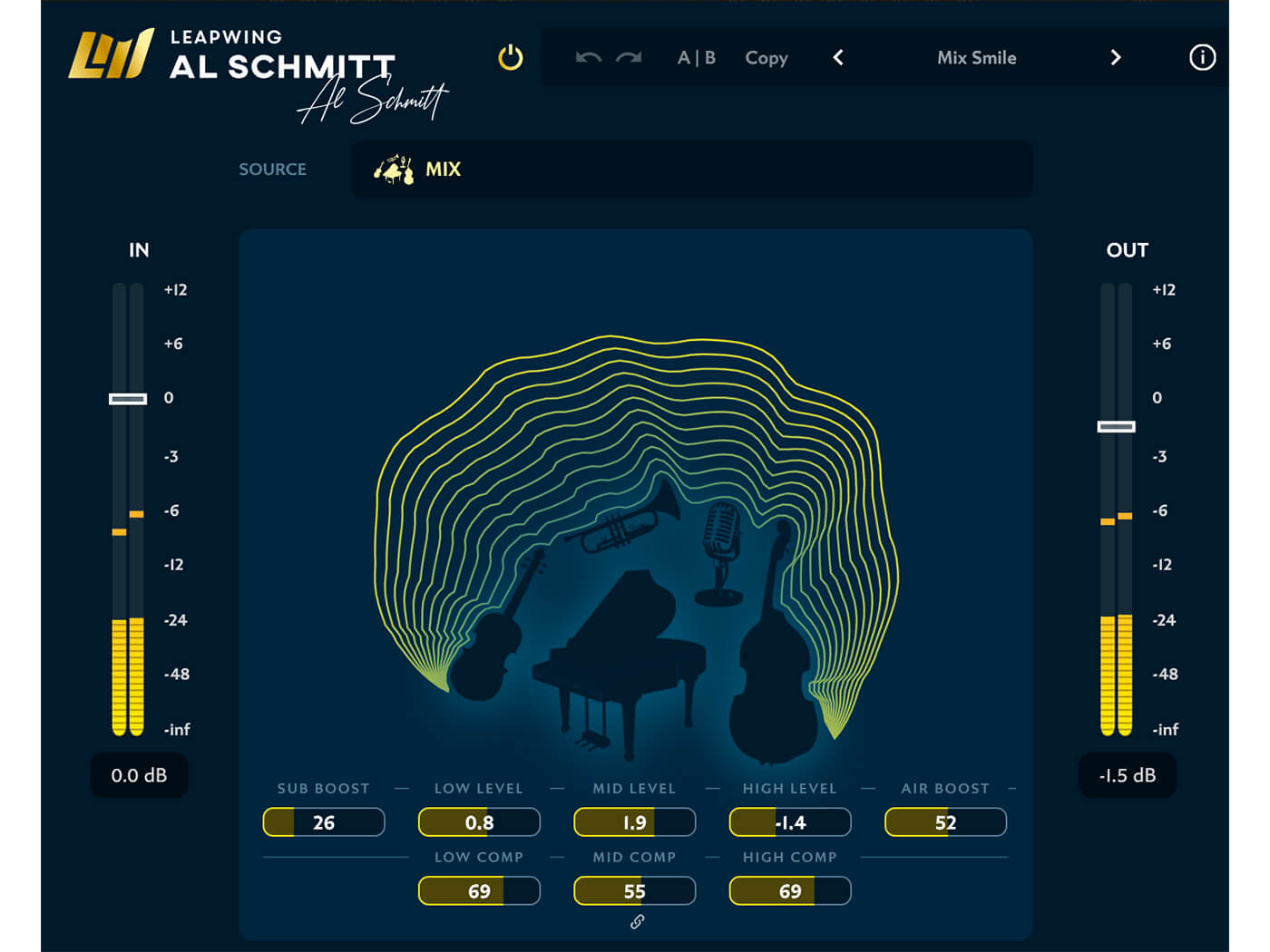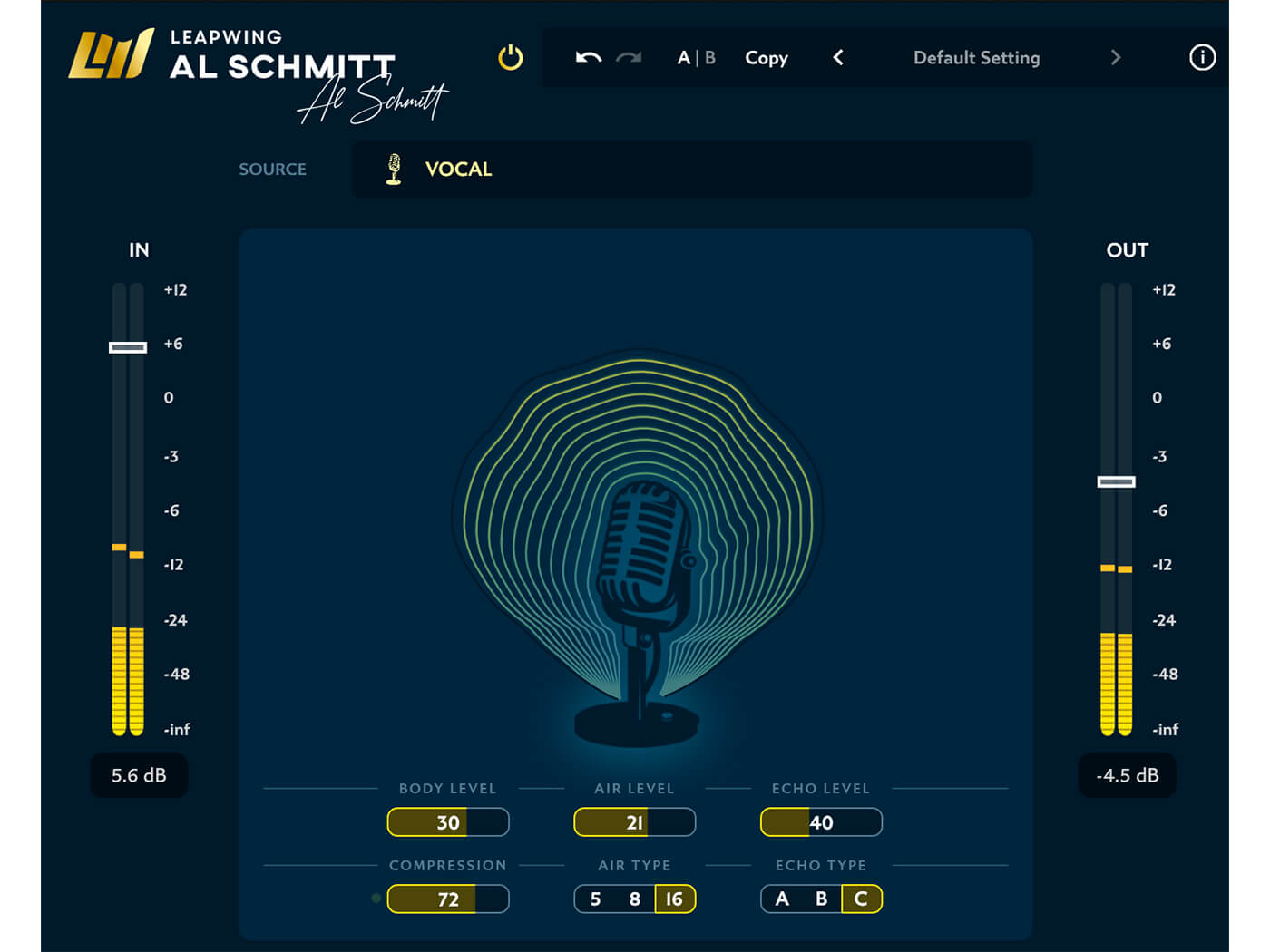Review: Leapwing Audio Al Schmitt
There are plenty of engineer-endorsed plug-ins out there, but this is the first to carry the legendary Al Schmitt’s signature sound.

Price £139
Contact Leapwing Audio
After many years, producer Al Schmitt has finally put his Grammy Award-winning sound into a signature plug-in, developed by Leapwing Audio. Schmitt needs little introduction with an eclectic artist sheet that includes Frank Sinatra, Sam Cooke, Johnny Cash, Michael Jackson and Celine Dion. Leapwing analysed his tools and workflow and then built a unique set of processors to get quick, pro-sounding results. We dig in to see if a single plug-in can capture a lifetime of mixing knowledge.
Fitting the profile
There are six profiles to choose from, each with a finely tuned set of parameter. Broadly, these involve EQ, compression, reverb and some harmonic generation. This is aimed primarily at acoustic music rather than electronic, too, with profiles for brass, vocal, bass, piano, strings and mix bus.
- READ MORE: Make subs that cut through on small speakers
The Vocal profile features a Body EQ that adds weight between 500Hz and 5kHz, and an Air EQ with selections for 5, 8 and 16kHz. There’s also a single knob compressor that adjusts threshold and ratio settings as it’s turned up, with higher levels of compression and additional harmonic saturation as you increase the input level. Finally, there’s an echo amount with three types, which is essentially a delicate blend of finely tuned reverb effects.
As you might expect, the vocal is the most complex of the six profiles. The simpler Bass module offers compression, body and air, the Piano offering compression and three echo types, and the string and brass profiles just offering the echos. There are subtle variations in how each is set up, with varying amounts of harmonics that have been fine-tuned to match Schmitt’s approach to each instrument.
The final profile is for the mix bus, although it can be a good choice for group busses, too. This features a Sub boost that lifts around 25Hz and an Air boost centred around 10kHz. There’s also a 3-band compressor with the ability to link bands, plus individual make-up gains. Outside of the individual profiles, the GUI also has input and output controls, undo/redo, A/B comparisons, and 14 presets.
Smooth operator
When using the plug-in, the words that come to mind are subtle, smooth, natural and transparent. Even with everything pushed to the extreme, the results are musical and tasteful, which is no surprise given Schmitt’s back catalogue. As such, it is perhaps best used to add polish to more refined acoustic music that’s already fairly well recorded and mixed. Of course, that’s not to say you can’t use it on a wide selection of genres, but don’t expect dramatic sonic differences.
Here’s a whole mix with multiple instances of the Al Schmitt plug-in, switching from bypassed to on and back again. You’ll probably need to use headphones to appreciate the difference, but note how the echos (reverb) add a sense of 3D space:
The GUI is extremely clean, with an animated graphic in the middle showing each instrument surrounded by rings that light up when a signal is present. This changes in brightness and colour when you add effects, and the outer rings go dark to show the compression amount. Although it’s visually appealing, it’s quite hard to gauge any useful information where a numeric read-out would be more informative. Likewise, the input and output meters might benefit from a LUFS reading to help with volume matching, and it would have been nice to have a 100% wet setting so you could use the excellent Echos on an effects send. It’s also worth noting that there are no drum and guitar profiles, although you can (and should) experiment with using what’s available on different instruments.
Despite these minor issues, this is a surprisingly effective plug-in. The echos, in particular, are superb and envelope a sound, giving it a professional, 3D sheen. Leapwing should be applauded for showing restraint in the finely tuned settings, as it helps make this a refined processor for final polishing that can help you obtain those elusive last few per cent.

Minimum System Requirements
- macOS 10.10 and higher
- Windows 8 and 10
- 64-bit plug-in VST, VST3, AU & AAX
Key Features
- 6 unique profiles with Al Schmitt’s iconic sound
- Vocal, piano, bass, brass, strings and mix bus
- Signature echos (reverbs) with different echo types
- Carefully tuned harmonic distortion
- Compression, Air and Body controls
- Resizable Retina GUI
- Sample rates supported up to 384kHz (DXD)